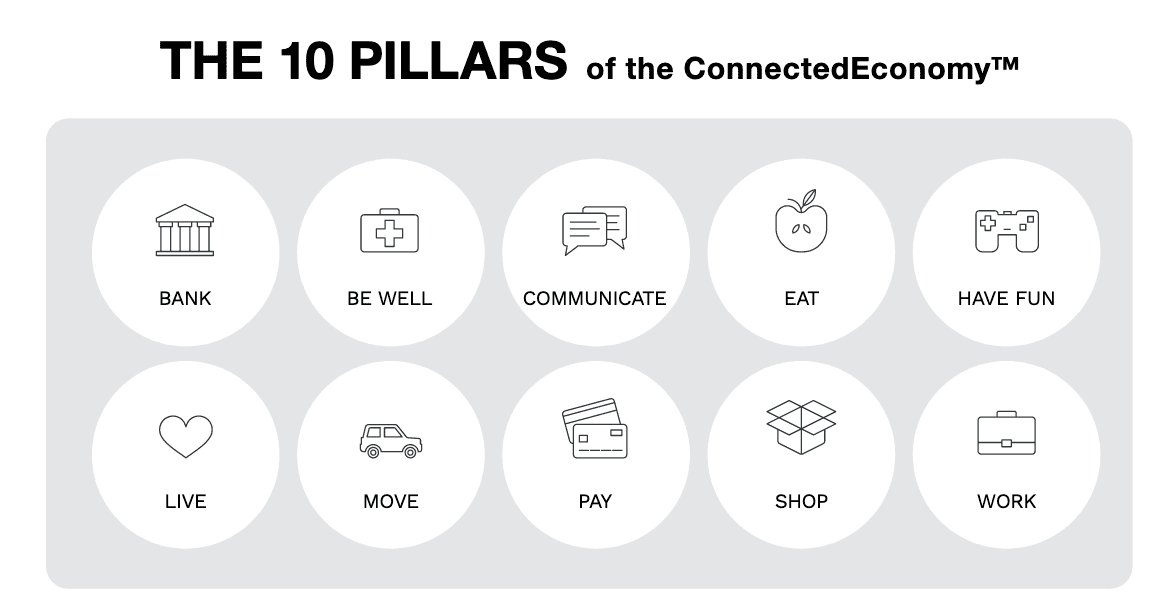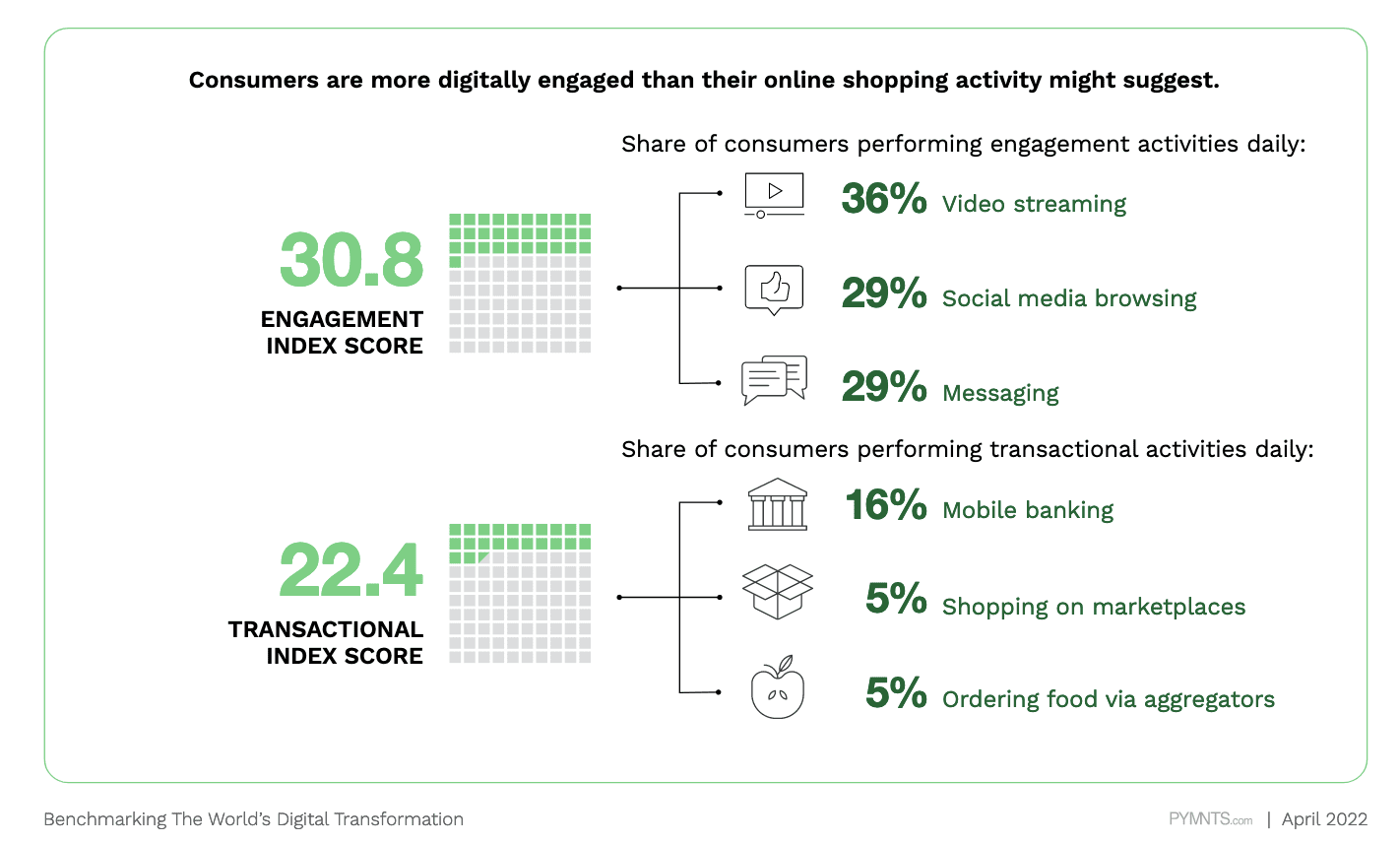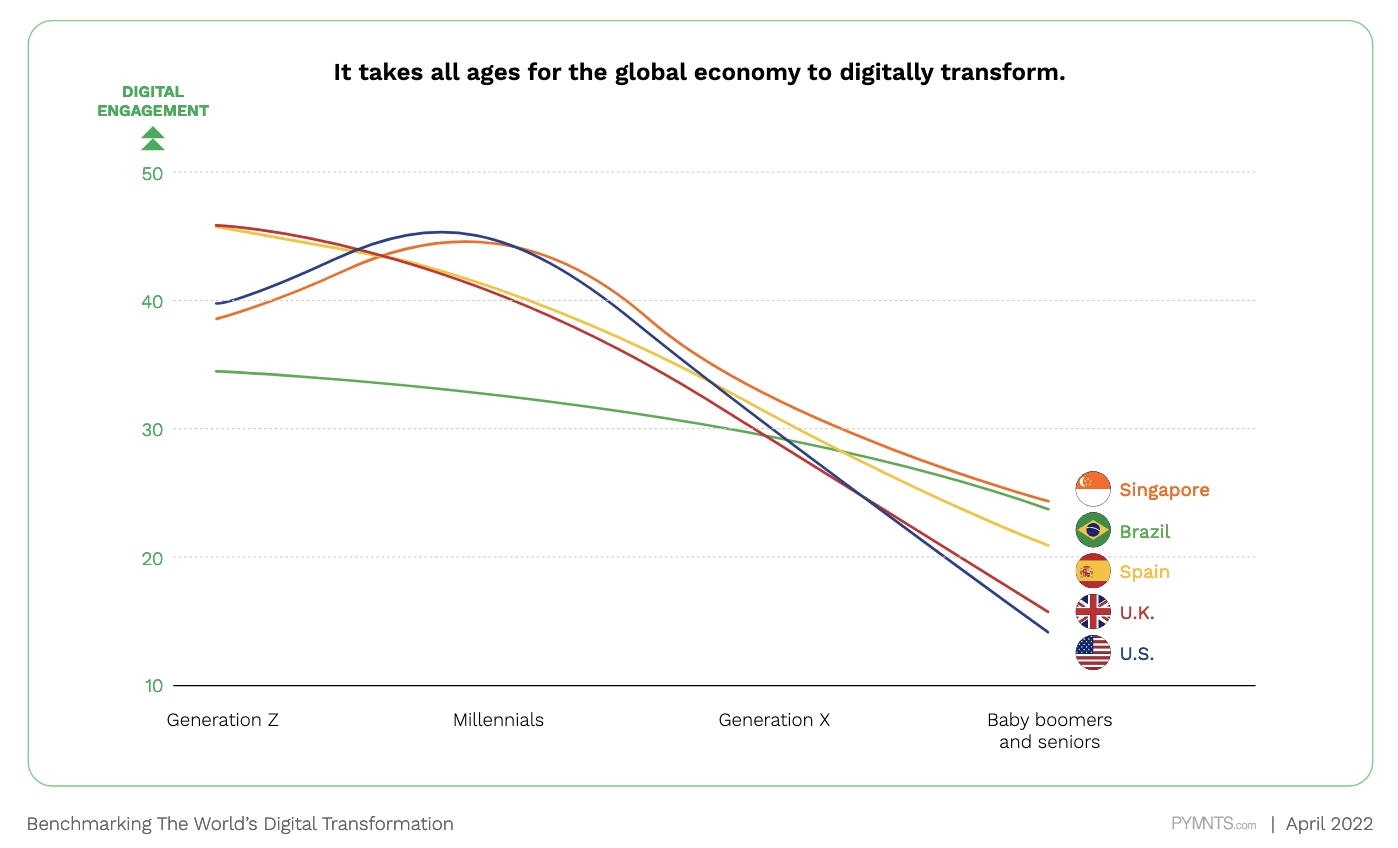How the World Pays: Digital Transformation’s Long Road Ahead

The progression of how the world pays in the wake of a jarring pandemic digital shift shows how far we’ve come — and how far we have yet to go — to realize the full benefits of what this transformative moment in history means to the immediate future of business.
In “Benchmarking The World’s Digital Transformation,” a PYMNTS and Stripe collaboration, we use PYMNTS ConnectedEconomy™ Index (CE Index) to measure digital engagement in the 10 pillars of connected economy, and the 40 activities within, each meaningful in its own way.
This survey of over 15,100 individuals in the 11 countries that comprise half of global GDP — the United States, the EU-5 (France, Germany, Italy, the Netherlands and Spain), the United Kingdom, Brazil, Australia, Japan and Singapore — proves the connective power of payments.
How we pay is at the heart of the connected economy and gives perhaps the most compelling evidence as to what’s working in bringing about transformation, and what needs work.
“We observe that consumers do not find many existing digital activities very engaging at this point,” the study notes. “Consumers are 40% more engaged in the digital activities that don’t involve making a purchase, such as streaming videos and hanging out with friends on social networks, than those that are only about transacting, such as shopping and paying bills.”
To spur innovation and make paying more experiential and satisfying in and of itself, “innovators must recognize that consumers want a choice in how they pay for the purchases they make in the digital world,” per the study. “Ubiquity is now defined by the user and not by what the platform is able to accept as payment.”
 Get the study: Benchmarking The World’s Digital Transformation
Get the study: Benchmarking The World’s Digital Transformation
Early Days for Transformation
Smartphone penetration is a prerequisite for a fully realized connected economy, and with 84% of the populations in the 11 nations studied possessing 14 billion connected devices with at least 4G throughput, it could be expected that transformation is more advanced than it is.
Per the study, “Collectively, the digital transformation of the 11 countries that represent half of the world’s GDP has barely reached more than a quarter of its potential. The CE Index score for these 11 countries shows that digital engagement worldwide has reached 27% of its full potential across the 10 pillars that represent digital transformation, revealing substantial progress but also a massive upside for the decades to come.”
 Get the study: Benchmarking The World’s Digital Transformation
Get the study: Benchmarking The World’s Digital Transformation
Everyone Into the Pool
Digital-first living is typically associated with younger consumers, and those demographics are well represented among the connected. But that population alone can’t bring whole economies completely into the digital fold — it requires entire populations.
“The biggest impediment to a country’s digital transformation is that there are too few people engaged in digital activities,” per the study. “Only 19% of the people in the countries we studied, on average, are highly engaged in digital activities, even though nearly everyone has the tools to do so. The more that all age groups in a population engage with digital activities, the more progress a country will make, and the higher the country’s CE Index ranking overall.”
 Embedded Payments Add Velocity
Embedded Payments Add Velocity
For digital transformation to move meaningfully beyond its current average of 27% complete by our measures, transacting itself will need to become more engaging.
This point is made by the fact that over 1 billion people engage with TikTok daily, compared to the 223 million people a month who visit Amazon. In that delta is immense opportunity to transform. Placing relevant products into social media flows is an immense opportunity to transform.
In fact, the study states that “consumers are nearly 40% more engaged, overall, in the channels that are not purpose-built for transacting. Embedding payments into those high-engagement but low-transactional activities will both accelerate digital transformation and contribute to the growth of the digital-inclusive GDP over time.”
Get the study: Benchmarking The World’s Digital Transformation
